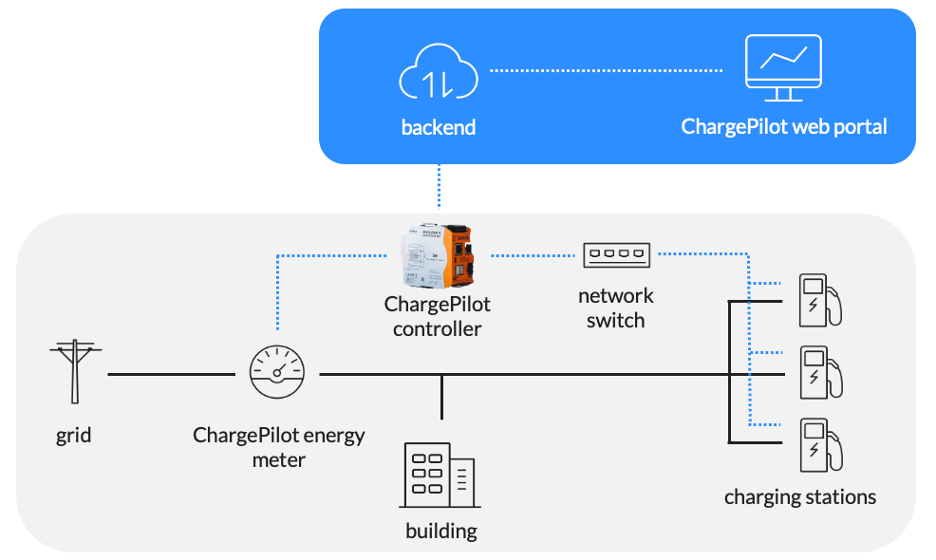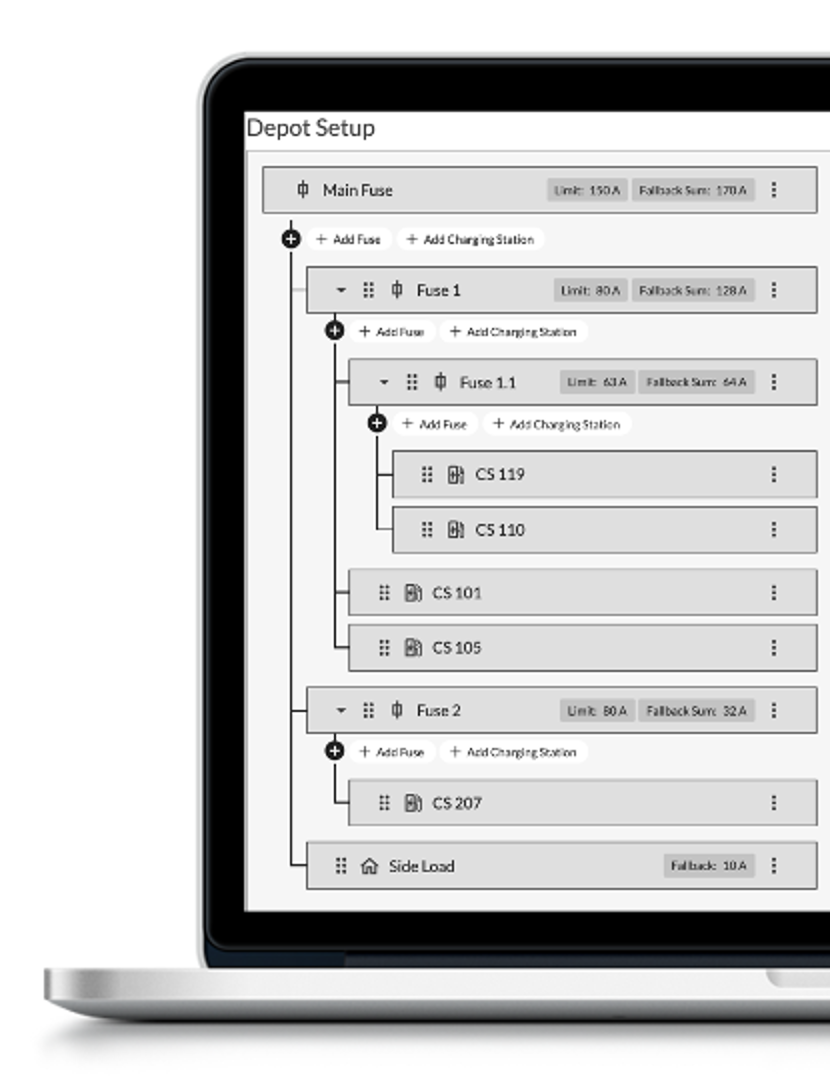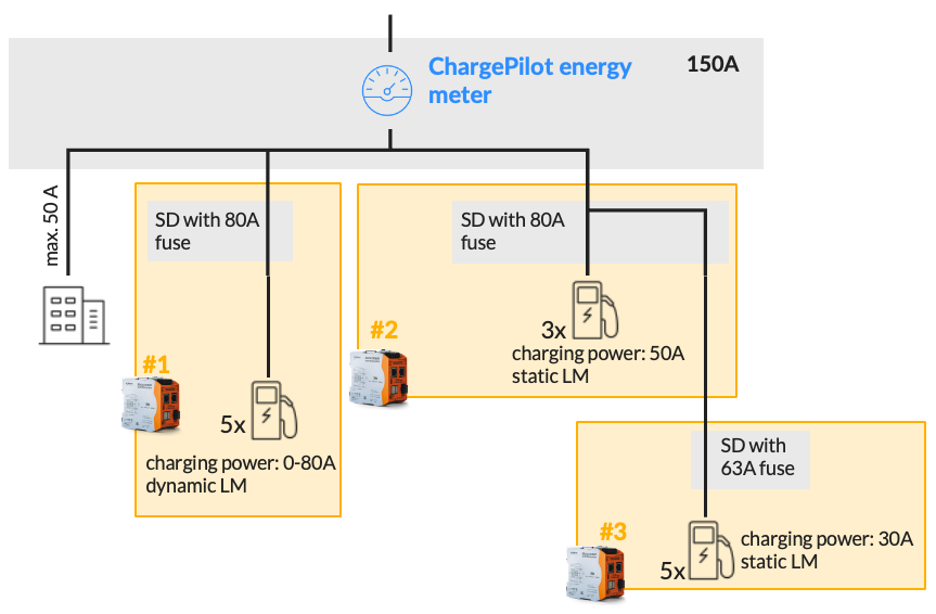ChargePilot® System Architecture

The Best of Both Worlds: Local & Cloud-based Intelligence Combined

Locally integrated...
The ChargePilot® Controller is a small piece of hardware that is installed on-site. It establishes the data connection between charging points and the mains connection, controlling the energy flows in real-time. Thanks to the direct connection, local consumers (e.g. buildings), as well as generators (e.g. solar systems), can be taken into account in real-time.
Since both the load measurement and the optimization of the charging power take place on-site, ChargePilot® ensures optimal load management even in the event of an unstable internet connection and short-term local power fluctuations.
... and smartly connected
All data is sent encrypted to the cloud - the ChargePilot® backend - which you can access easily and conveniently from the web portal. Here you can:
remotely monitor & control your charging processes
receive alert messages in case of faults
store external factors (e.g. energy rate information & timetables)
manage access to charging points
... and much more. For further information on the ChargePilot® web portal, see here.
So why ChargePilot®? The combination of local and cloud-based intelligence provides reliable load management with convenient remote monitoring.
ChargePilot® Compared to Remote and Local Solutions
The market comparison of ChargePilot® versus purely local and cloud-based charging management shows clear system, safety and operating advantages of ChargePilot.
ChargePilot® | local | remote | |
|---|---|---|---|
Charging and energy management | |||
Real Dynamic: Consideration of the building load in real time | ✅ | ✅ | |
Energy management: Consideration of energy tariffs | ✅ | ✅ | |
Energy management: Integration of local energy producers | ✅ | ✅ | |
Efficiency: Phase optimisation for full utilisation of the grid connection | ✅ | ✅ | ✅ |
Efficiency: Fast response time due to high sampling rate | ✅ | ✅ | |
Scalability: Unlimited number of charge points that can be integrated into a system | ✅ | ✅ | |
Fail-safe: Charging management even in case of failure of a (hub) station | ✅ | ✅ | |
Fail-safe: Controlled charging in case of loss of the data connection to the charging station (fallback) | ✅ | ✅ | ✅ |
Failure safety: Further optimised charging management in the event of an Internet connection failure | ✅ | ✅ | |
Monitoring & CPO | |||
Aggregation level: Aggregated display of all relevant charging data from multiple locations | ✅ | ✅ | |
Global Monitoring & Reporting: Remote access to all loading data of all locations | ✅ | ✅ | |
Notifications: Alert messages in case of charging station failure | ✅ | ✅ | |
Remote control: Remote start, stop and restart of the charging stations of all locations | ✅ | ✅ | |
Assembly, Installation & Maintenance | |||
Manufacturer neutrality: Charging stations of different manufacturers and types (AC & DC) | ✅ | ✅ | ✅ |
Open ecosystem: Connection to higher-level local energy management systems | ✅ | ✅ | |
Open ecosystem: Interface to third-party systems (e.g. network operators) | ✅ | ✅ | |
Installation: Easy installation due to standard components & remote commissioning | ✅ | ✅ | |
Maintenance: Remote maintenance and updates for charging management and charging stations | ✅ | ✅ | |
→ Find a detailed comparison of the systems in our blog post
More complex distribution structures? No problem with ChargePilot®!

Entry by The Mobility House in the ChargePilot® web portal (Admin Panel)
ChargePilot® Multi Fuse optimizes the power distribution to any number of sub-distributions. The connection location of the sub-distribution has no effect on the power offered to the charging stations – each vehicle charges with the same priority by default.
In this way, complex distribution structures can be realized with only one ChargePilot® controller and your setup and hardware costs are reduced. Multi Fuse achieves the greatest possible potential for charging electric vehicles while taking all limits into account.
Schematic representation of a possible use case:
Electrical assembly with Multi Fuse | Electrical assembly without Multi Fuse |
 SD = sub-distribution LM = load management |  |
|
Why?
|
